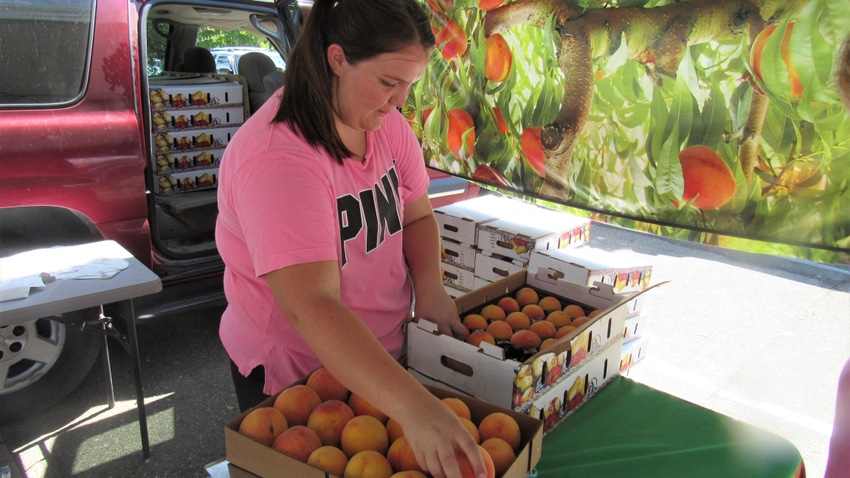
A seemingly endless string of triple-digit afternoons in California’s inland valleys is beginning to take its toll on crops as growers try to minimize the damage.
Robert Mills, who grows peaches, apricots and other fruit in the northern Sacramento Valley, says the hot afternoons are only the latest headache after a winter freeze damaged some of his early-ripening fruit.
“The heat is definitely not helping,” says Mills, owner of R and K Orchards in Corning. He adds that humidity levels are increasing brown rot pressures. He’s also encountering excessive bird damage of fruit, which he says may be a result of the weather’s impact on food sources.
“We usually see 5 or 10 percent” of fruit affected, Mills says, “but it’s as much as 40 percent this year.”
This marks the second straight year that R and K’s crops have been affected by weather. With last year’s late spring storms leaving many orchards under water for weeks, the farm lost as much as 90 percent of its apricot crop and saw many of its young peach trees ruined. Other growers faced similar issues.
Mills’ latest troubles come as many growers have had to protect their crops from sunburn and step up irrigation schedules as temperatures above 100 degrees have lingered for weeks.
For instance, as of July 25, Fresno had seen 19 straight days of triple-digit highs, while the high temperature in Red Bluff had been 100 degrees or hotter in 14 of the previous 16 days, according to the National Weather Service.
“It’s pretty abusive,” says Rick Buchner, a Red Bluff-based University of California Cooperative Extension emeritus farm advisor. “We’ve been having to get out of the fields with our research projects around noon.”
CROPS AFFECTED
Among crops that have been affected:
Prunes. Extreme heat can cause blue prune, in which plums for prunes drop prematurely. Such problems are possibly widespread, as may be sunburned prune trees, which can cause secondary issues such as phytophthora, Buchner says.
“It’s probably going to vary a little bit because the cropping is really variable – some good, and some really light,” he says. “We had a heck of a time pollinating them.”
Tree nuts. For nut growers, sunburn is always a concern, advisors say. For instance, extreme heat can damage the leaves of young walnut trees, producing darker kernels that don’t bring as much of a premium.
Almond, walnut and pistachio growers have been irrigating their orchards, and almond groves were treated with pesticides and fungicides, according to the National Agricultural Statistics Service.
“A lot of our guys are pretty good with the heat,” Buchner says. “They run water for cooling and do a few little tricks … that help a little bit.”
Valencia oranges. High temperatures cause re-greening of Valencia oranges, forcing growers to treat them and divert them to domestic markets because some foreign trading partners don’t accept chemically treated fruit.
Citrus packers have been color-sorting Valencias as treatments to restore their color have been more prevalent because of the high temperatures, NASS reports.
Avocados. A heat wave in Southern California earlier this month damaged avocados as the season was nearing its end, and growers are evaluating whether the heat could affect next year’s crop, too, according to the California Farm Bureau Federation.
Young avocados for next season had reached olive or walnut size when the highest temperatures hit, the Farm Bureau reports.
Forage. Rangeland and non-irrigated pasture has continued to deteriorate with the hot, dry weather, NASS observes. Lower-elevation range and non-irrigated pasture is in poor to fair condition, while conditions are somewhat better at higher elevations, according to the agency.
Cattle producers are providing supplemental feed to compensate for the declining nutritional value of the rangeland forage, NASS reports.
A respite from the heat may not come soon, as the federal Climate Prediction Center sees a likelihood of higher-than-average temperatures throughout the West over the next three months.
About the Author(s)
You May Also Like






